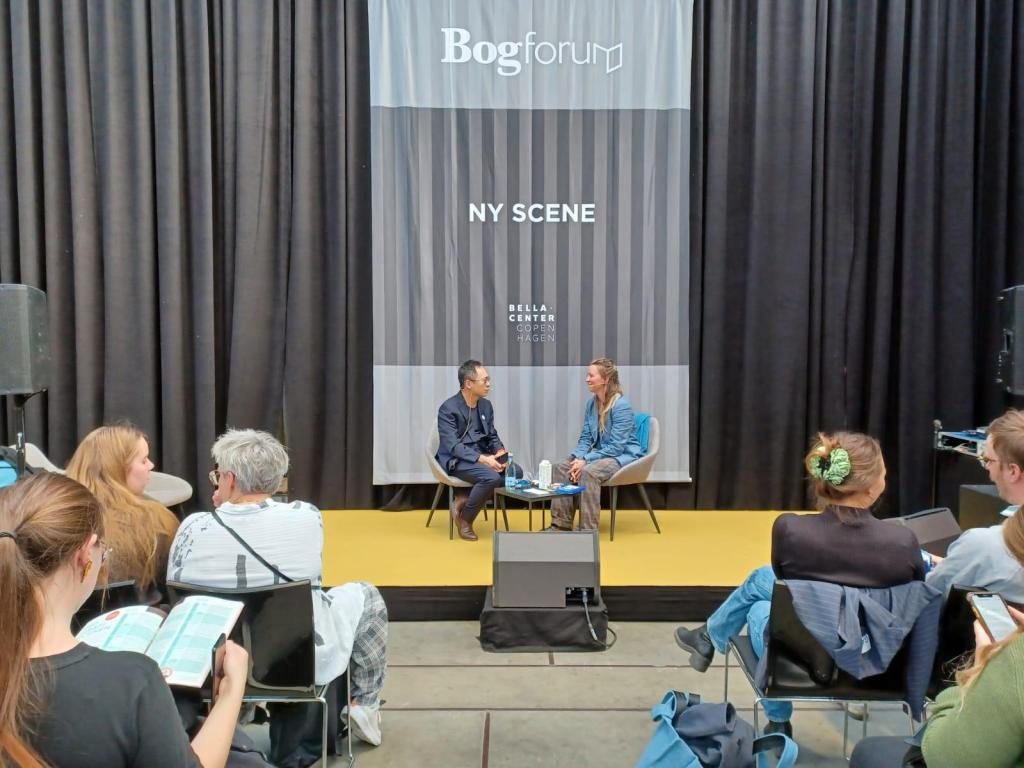Membranes separate us from, and connect us to, the world – they are everywhere: in our cells, in our surroundings, and now in Danish translation!
My recent translation of Chi Ta-wei’s short novel 膜 Membraner (The Membranes) with Korridor small press has been so well received that we decided to invite Ta-wei to Copenhagen (with generous funding from the National Culture and Arts Foundation, Taiwan).
For the past two weeks I’ve enjoyed informal chats as well as public talks with Ta-wei about his inspirations and plans for the future at Lund University, Höst literary festival, Thiemers Magasin, the University of Copenhagen, and Bogforum. The visit also received a lot of attention from the Danish and Taiwanese press.
Ta-wei told me about experiences with nosy masseurs that inspired him to write about the skin as a medium for spying on people’s private lives. It makes sense – in classical Chinese medicine, the skin has always been a primary source of information about the health of the body through sphygmology (pulse examination). The skin is a membrane that reveals as much as it conceals.
Another important membrane in the novel is the sea: Due to heavy pollution and a damaged ozone layer letting in UV-rays, humanity has relocated to the sea floor. Here, Ta-wei criticized his younger self for falling into the trap of portraying settler colonialism uncritically – a widespread phenomenon in SF. Today he would have paid much more attention to the lifeforms already inhabiting the sea and questioned what mass human migration would have meant for the indigenous ecology.
Screens are also a type of membrane that the novel explores, a motif that has only become more relevant since the advent of smart phones and more recently remote meetings and video chats during the pandemic.
On a metaphorical level, the novel continuously plays with, and softens, membranes between categories – particularly those pertaining to gender and species. Momo is born in a male body, raised as a girl, and later undergoes medical transition to become female. Such social and physical categories are backgrounded however, as Momos mothers have always raised her as their daughter – albeit a special fairytale daughter, born from a peach.
Momo is also partly artificial. She has one finger replaced with a biological replica and that starts a philosophical inquiry into what it means to be human. In Momo’s society, androids – a type of biological robot – do all the hard and dangerous work. How much of Momo would need to be replaced by bionics before she is more android than human? As we incorporate technology more intimately into our bodies and everyday lives – pacemakers, cochlear implants, glasses and smarts phones – many of us are habitual cyborgs.
Finally, the membrane of language was an interesting topic for me as a translator. The way the novel lives in various languages and the fact that, in each linguistic bubble, Momo and her subsea world looks and sounds slightly different. “Membrane” is not pronounced mo in Danish as it is in Chinese, and so the immediate auditory connection between Momo and the membranes is obscured. On the other hand, mother in Danish (mor) is pronounced exactly like membrane in Chinese –mo – and so another connection is established. As translation takes us through the linguistic membrane of one language and into another, the novel also transitions and changes, becoming something new that is both the same and different.


